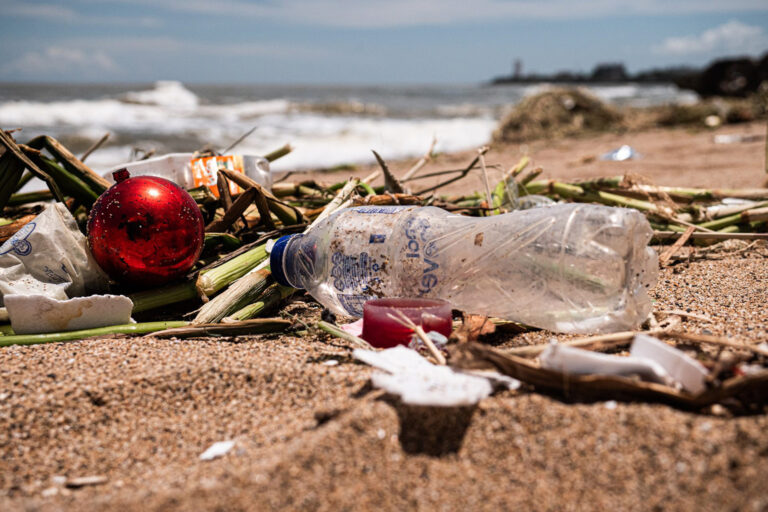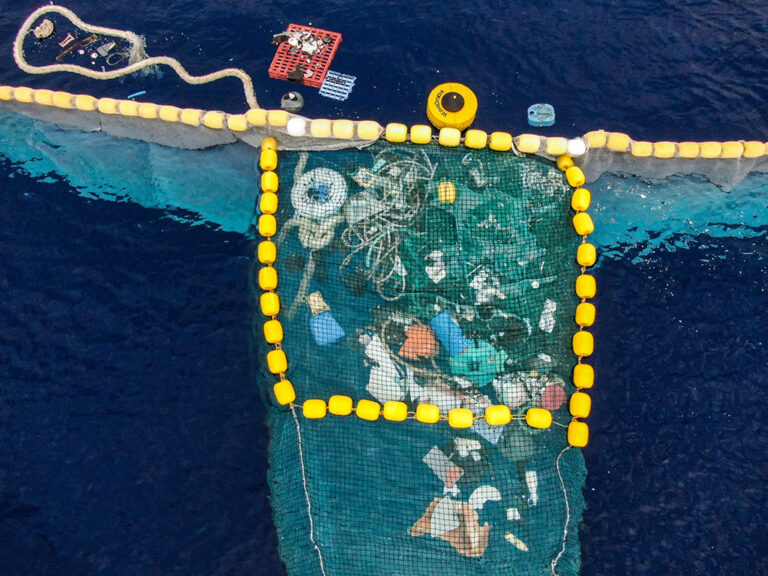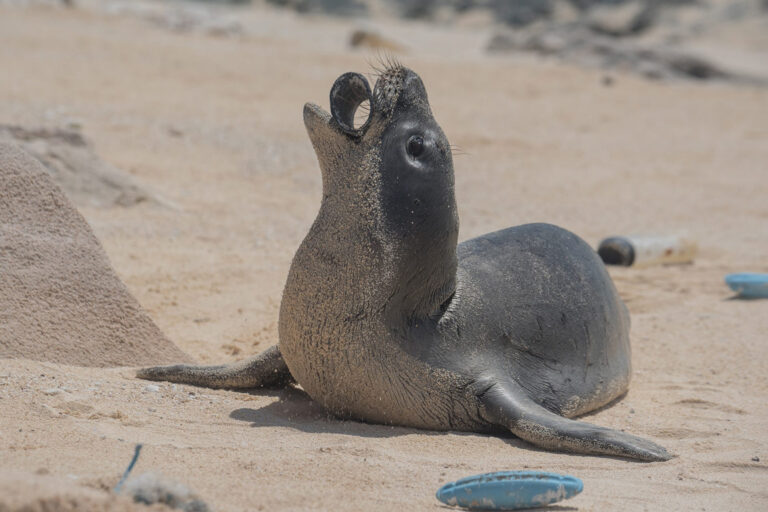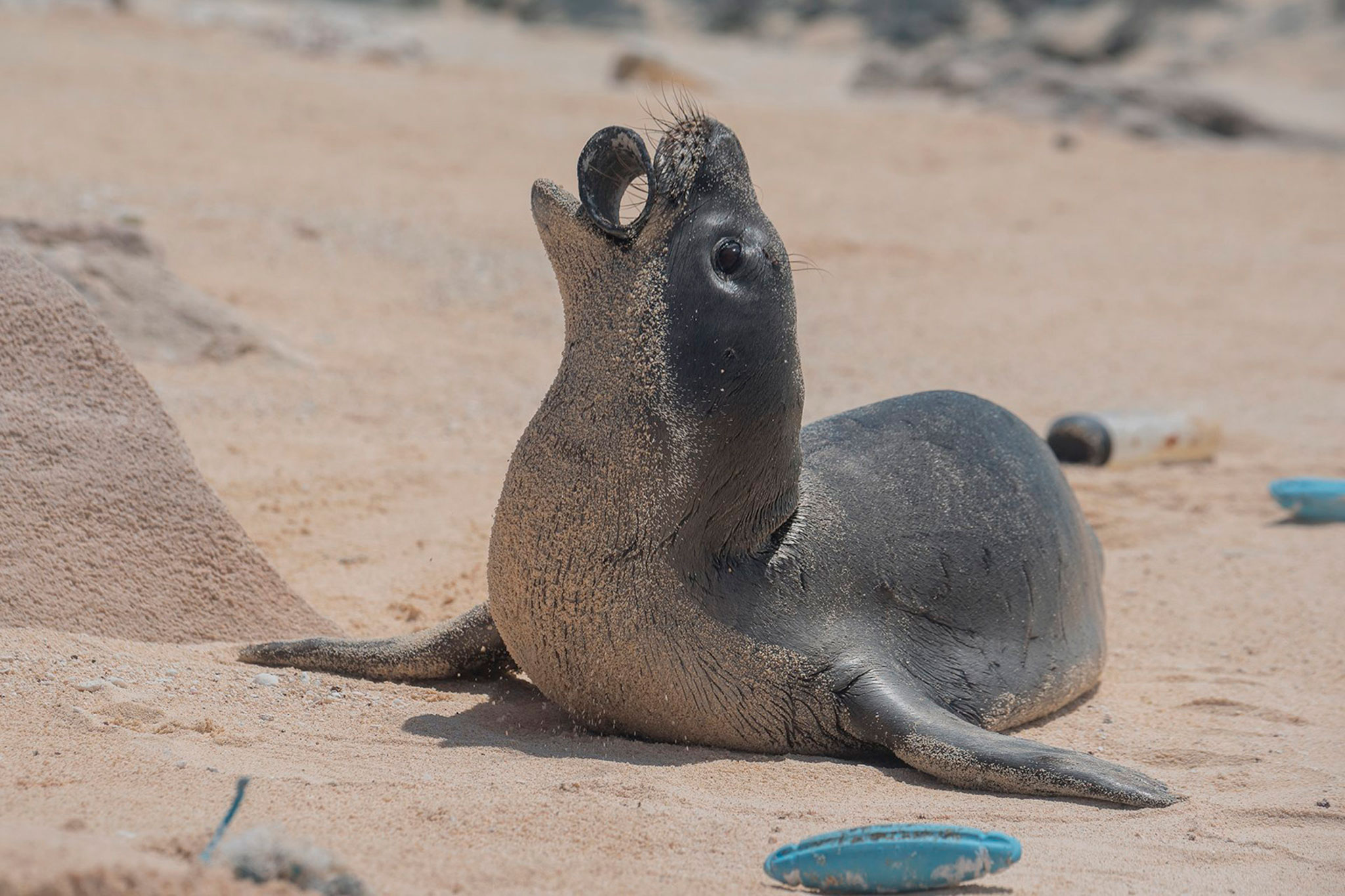Cleanup Jobs Won’t Solve the Plastic Pollution Crisis in the World’s Seas
Story by: Mongabay
- A model simulating a device to clean plastic from the Pacific garbage island shows that it would collect much less than 1% of ocean plastic pollution by 2150.
- In addition to the work to get plastic out of the sea, a more comprehensive approach to reducing plastic is needed, including holding companies accountable.
The Ocean Cleanup is a highly publicized non-profit organization with an ambition to clean 90% of the plastic in the oceans. In reality, the initiative’s effect on the world’s floating garbage would be minimal, researchers reported in Science of the Total Environment.
“I think the general public thought we had a solution to the plastic problem,” said Sönke Hohn, lead author of the study and a marine biologist at the Leibniz Center for Tropical Marine Research in Bremen, Germany. “Our research showed that we are far from solving this problem if we do not continue to change our behavior.”

An incredible amount of plastic invades the world’s seas every year. The number is expected to triple over the next century. Photo by: the Ocean Cleanup.
Every year, 5 to 13 metric tons of plastic end up in the ocean. That number is expected to triple in the next century. It is not only a danger to marine life, which can become trapped in or ingested plastic, it is also a risk to human health if contaminated fish is eaten.
The Ocean Cleanup is one of the most famous initiatives to tackle the rapid increase in waste in the ocean. His cleaning device, according to the organization’s marine biogeochemist Matthias Egger, works like “a giant Pac-Man” and sweeps up trash using a screen attached to a floating barrier. The organization defends that it can use this device to eliminate half of the Pacific garbage island – a great whirlpool of plastic waste – in five years.
To understand whether the device would achieve its goal, Hohn and his colleagues developed a mathematical model to simulate the collection of plastic from the ocean. The team studied several possibilities: in a normal situation without manual collection, with the use of a cleaning device, and with a fleet of 200 cleaning devices.
The results showed that a device would only remove a tiny fraction of 1% of the plastic by 2150. Even with 200 devices spread across the ocean that worked continuously for 120 years, the impact would still be extremely modest. This model was the first to quantify the cleaning device’s ability to remove accumulated plastic from the oceans.
“The Ocean Cleanup is not going to solve the current problem,” said Christine Figgener, a marine conservation biologist at the Costa Rican Alliance for Sea Turtle Conservation and Science, who was not involved in the study. “We have to fix the problem from every possible angle,” she added.

This cleaning device, which consists of a screen attached to a floating barrier, sweeps away plastic pollution from the ocean’s surface like a “giant Pac-Man.” Photo by: the Ocean Cleanup.
Every year, 5 to 13 metric tons of plastic end up in the ocean. That number is expected to triple in the next century. It is not only a danger to marine life, which can become trapped in or ingested plastic, it is also a risk to human health if contaminated fish is eaten.
However, Egger of The Ocean Cleanup discusses the study’s methods. He believes that because the model assumes that the plastic is regularly scattered throughout the ocean, Hohn’s team has underestimated the device’s capabilities.
“There are islands of garbage in the ocean that we focus on, and the concentration [of garbage] there is up to 10,000 times greater than in nearby waters,” Egger told Mongabay. The great island of garbage in the Pacific, he explained, only covers 0.4% of the total ocean surface, but could contain between 30 and 50% of the world’s marine plastic.
However, scientists on both sides agree that disposing of trash is only part of the solution. Figgener, an ocean advocate who holds the position of Director of Science and Education at the Footprint Foundation, ignited an anti-straws movement – also known by the names of cigarette, straw, light bulb, reed, straw, absorbent, sorbet, calimete, pipette, sorbito , straw, among many – in 2015 after a video of his team, in which they removed a straw from a turtle’s nose, went viral.
“We have to realize that companies are primarily responsible for our plastic tides,” Figgener said. “If we stop buying from certain companies and [certain] products, I think we will see more and more alternatives, perhaps even from the same companies because they will see that people are demanding something different.”

La contaminación de plástico pone en peligro a los animales marinos como esta foca monje joven, que puede quedarse atrapada o ingerir basura. Foto de: the Ocean Cleanup/Matthew Chauvin
Agostino Merico, a physicist who also works at the Leibniz Center and senior author of the study published in Science of the Total Environment, emphasized that the team’s goal was not to belittle the efforts of the Ocean Cleanup.
“Our message is not that cleaning doesn’t work”, Merico told Mongabay. “Cleaning up our filth, which is something we have to do, is not going to be easy, it is not going to be quick and it is not going to be cheap,” he insisted.
Reference:
Hohn, S., Acevedo-Trejos, E., Abrams, J. F., de Moura, J. F., Spranz, R., & Merico, A. (2020). The long-term legacy of plastic mass production. Science of The Total Environment, 746, 141115.
Isabella Backman (@IzzyBackman) is a student in the Scientific Communication Program at the University of California, Santa Cruz. Other stories produced by students of the program can be read here.
Original article: https://news.mongabay.com/2020/11/clean-up-efforts-wont-solve-the-plastic-pollution-crisis-in-the-worlds-seas/
